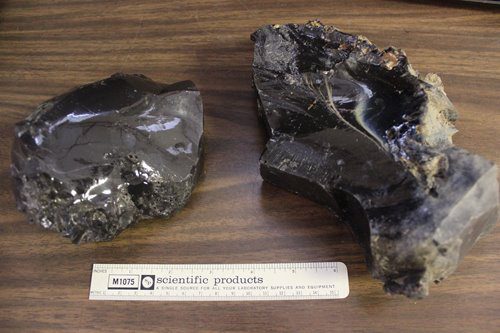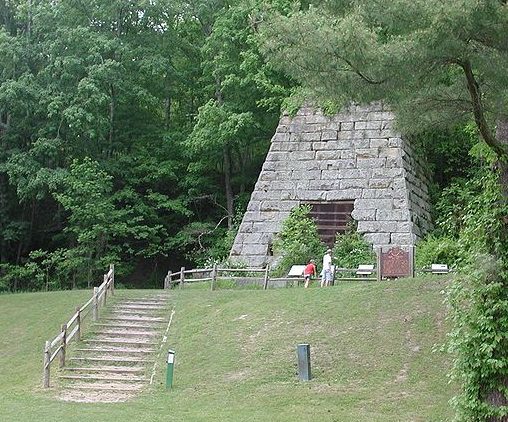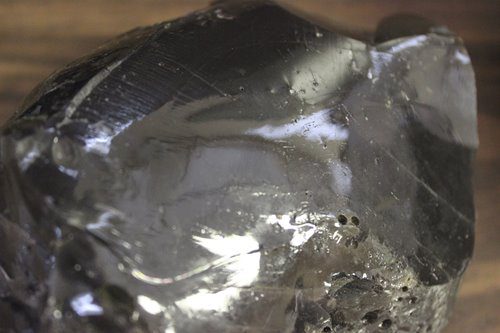
If you came across these objects, what would you think!? They were found in southeast Ohio, are heavy, have a smooth texture, and sharp edges. The scale is 6 inches, so these are fairly large but they can be much smaller. Who would you call to get them identified? An archaeologist, geologist, or…?
Answer:
Several of you recognized this hard shiny material as slag. Though it can look like the mineral obsidian, slag is actually the by-product of the smelting process to obtain metal from raw ore. Metals such as iron, lead, copper and others are found in nature in their impure states, called ores. When the ore is heated at high temperatures in blast furnaces, the impurities (metal oxides and silicon dioxide) separate out from the molten metal and eventually cool into glass-like chunks of slag. Slag from the old iron furnaces of southeast Ohio often got scattered in the surrounding area and can still be found today. They are sometimes confused with obsidian or even meteorites.
Both of the pieces of slag in the upper photo were collected from the old Hope Furnace in Vinton Co., Ohio. Built in 1854, part of the original Hope Furnace still stands today. And not far from Hope Furnace in nearby Jackson Co. is Buckeye Furnace, an historic site of the Ohio History Connection. Here you can see the best example of a fully restored iron blast furnace, with an original stack. Also on-site is a reconstructed company store.

Hope Furnace. Photo by Jaknouse
Many people don’t realize it, but southern Ohio was once one of the largest iron-producing regions in the nation. This area, known as the Hanging Rock Iron Region (HRIR), stretched from northern Kentucky up through Jackson, Vinton, and Hocking counties of Ohio. By the time of the Civil War, Ohio had established 69 iron blast furnaces and produced more than 100,000 tons of iron each year. The iron from Ohio was important for the manufacture of cannons and ammunition for the Union Army during the Civil War.

Close-up view of slag.
It’s hard to imagine that in the vicinity of these old furnaces, where today we see thick second-growth forests, the hillsides were almost completely stripped of their trees. The furnaces required massive amounts of lumber; for charcoal, which was added to the combination of ore and limestone (used as a flux) to produce the raw iron, and for the fires that often kept the furnaces working 24 hours a day. The furnaces employed hundreds of people, working the furnace, cutting the timber, and hauling ore and lumber to the furnaces with oxen and horses. But by 1900 almost all of the furnaces in Ohio had closed. Some of the land that was once completely stripped of trees and where the air was acrid with smoke is now beautiful second-growth forest of oak and hickory. The area around Hope Furnace is now made up of Lake Hope State Park and Zaleski State Forest, and there are two nature trails to enjoy in the forests around Buckeye Furnace. Keep your eyes out for the glass-like pieces of slag on the forest floor, a reminder of Ohio’s prominence as an iron-producer in the 19th Century.